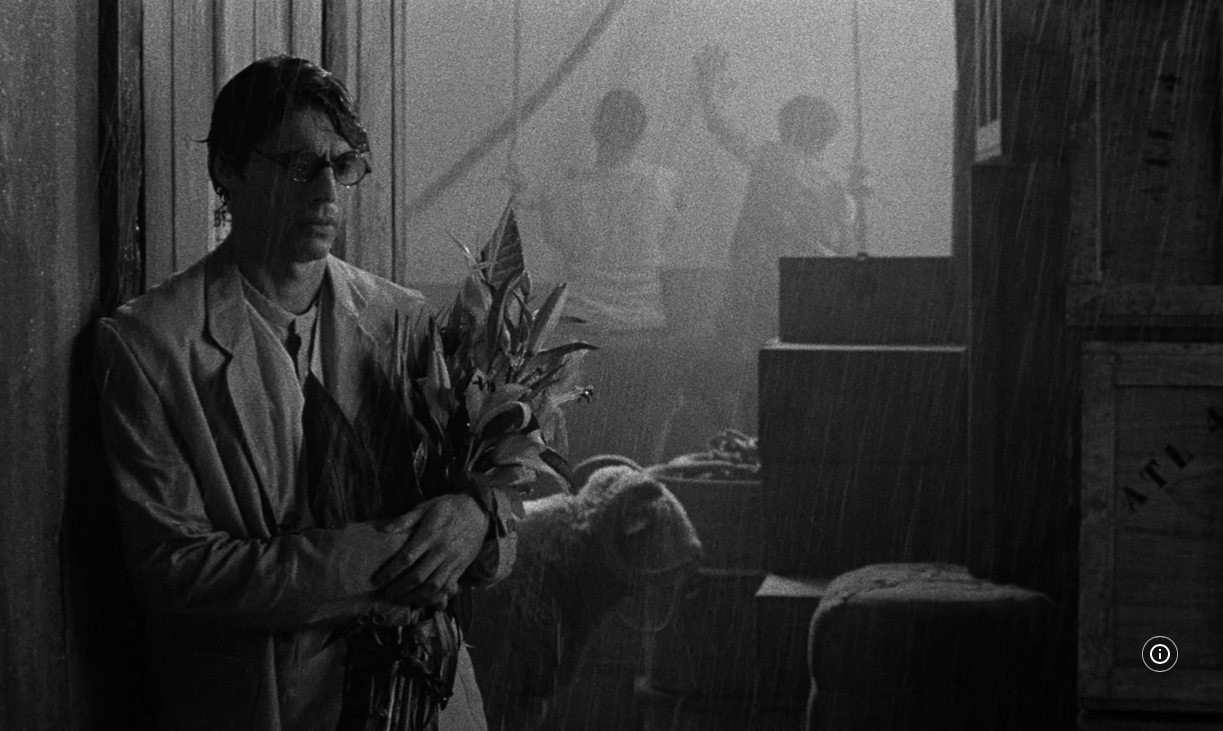OTC Rating : 4/5
Introduction
Miguel Gomes’ Grand Tour is a poetic and visually daring film that transcends conventional storytelling. Blending fiction, travelogue, archive, and political reflection, it is a cinematic voyage across Southeast Asia and across time. Set in the early 20th century yet shaped by the ghost of colonialism and the weight of memory, Grand Tour offers an experimental viewing experience that rewards patience and attention.
Technically brilliant and visually arresting, the film explores displacement and longing, memory and modernity, through a unique aesthetic structure. Its immersive sound design, unconventional editing, and a mix of archival and newly filmed footage make it a cinematic mosaic unlike any other.
Story & Narrative Structure
The narrative is centered on Edward, a British civil servant stationed in Rangoon in 1917, who abruptly flees his engagement with his fiancée Molly. As Molly follows him through Asia—Burma, Thailand, Vietnam, Japan—the film follows both her physical journey and his mental escape. However, this isn’t a straightforward chase or period drama.
Instead, Gomes interweaves their fictional story with black-and-white archive footage and color sequences that seem to blend eras and identities. Dialogue is sparse, and the narrative unfolds more through images, textures, and rhythms than conventional plot points. It plays like a meditation rather than a novel, asking viewers to surrender to its pace.
Image courtesy : IMDB
Direction
Miguel Gomes directs with a lyrical, collage-like sensibility. His approach rejects linear storytelling in favor of emotional and historical evocation. This decision turns the film into a cinematic essay as much as a narrative feature.
He handles temporality with fluidity, jumping across decades within a single montage, mixing archival footage with contemporary recordings without jarring contrasts. Gomes turns the concept of a “grand tour” on its head: it becomes a tour not only through geography but through colonial memory and cinematic form itself.
Performances
The performances are intentionally restrained, particularly by Gonçalo Waddington as Edward and Crista Alfaiate as Molly. Their delivery is not about expressive realism but serves more as symbolic presences.
Waddington portrays Edward as a ghost of empire—aloof, emotionally fractured, and always slipping out of frame. Alfaiate brings steadiness and mystery to Molly, suggesting layers of emotion beneath her composed exterior. The film doesn’t aim to extract psychological complexity but instead uses the actors as carriers of mood, history, and tone.
Image courtesy : IMDB
Cinematography
Sayombhu Mukdeeprom, the cinematographer (known for Call Me By Your Name), delivers a masterclass in visual tone. The film shifts between rich color imagery and grainy black-and-white archival footage. Every frame, regardless of era, is composed with care and painterly detail.
Mukdeeprom’s use of natural light, shadow, and texture makes even static shots feel alive. The camera movements are often slow and deliberate, echoing the film’s reflective tone. There are panoramic wide shots of landscapes, dense compositions of urban spaces, and quiet, intimate portraits.
The fusion of formats—35mm film, video, digital—creates a layered visual texture that blurs the line between past and present.
Production Design & Art Direction
Despite being partially composed of existing footage, the production design in the newly shot sequences is meticulous. Every location—be it a colonial hotel, bustling street, or quiet railway station—feels steeped in history.
Costumes are period-appropriate without being flashy. There is a quiet realism to the props and sets, emphasizing mood over spectacle. Art direction plays a vital role in maintaining the illusion of time travel, as modern details are carefully avoided or hidden to preserve immersion.
Sound Design
The sound design in Grand Tour is both subtle and essential. Gomes and his team use ambient noise, voiceover narration, and archival audio to build a rich sonic landscape. Often, sound bridges different eras, tying together scenes from different timelines with the same background hum of trains, insects, or city life.
There are moments of intentional silence, too, used to let images resonate. The voiceover—delivered with poetic understatement—acts as both a guide and a mystery, prompting viewers to reflect rather than absorb.
Music & BGM
Rather than using a traditional score, Gomes employs music sparingly but powerfully. When music appears, it is often anachronistic—modern pop or traditional Asian instrumentation—used in unexpected places. This adds to the timeless, dreamlike feel of the film.
The background music doesn’t underscore emotion as much as comment on it. At times ironic, at times mournful, the BGM is more of a character than a cue, helping build an emotional resonance without dictating it.
Image courtesy : IMDB
Editing
The editing in Grand Tour is deliberately unconventional. Editor Telmo Churro structures the film in a loose, associative style, jumping from place to place, time to time, without announcing transitions. Montage is a key technique, used to contrast modern Southeast Asia with colonial history, or to show a character’s inner state.
Long takes are contrasted with rapid, rhythmic cuts between archival clips. This editing strategy creates a sense of time slipping away, of history bleeding into the present. Scenes often dissolve or fade rather than cut sharply, reinforcing the film’s dreamlike flow.
Conclusion
Grand Tour is not a film for everyone, but for those open to its rhythms, it is a rich and rewarding experience. It stretches the boundaries of cinematic form, combining fiction and documentary, past and present, sound and silence, all in the service of exploring memory, colonial legacy, and emotional distance.
With remarkable cinematography, immersive sound, and daring direction, Grand Tour is a film to feel more than to follow. It invites you not to understand but to wander, not to interpret but to sense. Gomes reminds us that cinema can be a map of the unseen: of time, emotion, and memory.
Why Watch It
- For its mesmerizing cinematography by Sayombhu Mukdeeprom
- A rare hybrid of fiction, archive, and poetic travelogue
- An immersive soundscape that enhances its dreamlike quality
- A unique narrative experience that challenges traditional storytelling

